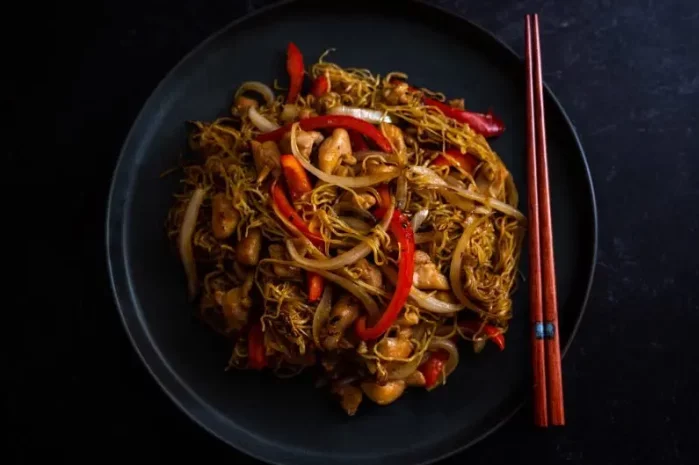Chinese pasta, often referred to as Chinese noodles, is a staple in many Chinese households and a beloved dish worldwide. Unlike Italian pasta, Chinese pasta comes in various shapes, sizes, and textures, each suited to different cooking methods and flavors. From stir-fries to soups, Chinese pasta dishes are versatile, nutritious, and bursting with flavor. In this guide, we’ll explore how to cook Chinese pasta, highlighting essential steps, tips, and delicious recipes.
Understanding Chinese Pasta Types
Before diving into cooking, it’s crucial to understand the different types of Chinese pasta. Here are some common varieties:
Fresh Noodles: Made from wheat flour, water, and sometimes eggs, fresh noodles are soft and chewy. They’re often used in stir-fries, soups, and noodle dishes like lo mein.
Dried Noodles: These include instant noodles, udon noodles, and soba noodles. Dried noodles are convenient and can be stored for long periods. They’re perfect for soups and stir-fries after being rehydrated.
Rice Noodles: Made from rice flour, these noodles are gluten-free and come in various widths, from thin rice vermicelli to wide rice sticks. They’re commonly used in dishes like pad Thai and bun bo hue.
Glass Noodles: Also known as cellophane noodles or bean thread noodles, these are made from mung bean starch. They’re translucent and have a slightly chewy texture when cooked.
Wonton Noodles: These are thin, delicate noodles often used in wonton soup.
Preparing Your Ingredients
Cooking Chinese pasta begins with gathering the right ingredients. Here’s a basic list:
- Noodles of your choice
- Vegetables (such as carrots, bell peppers, broccoli, and snap peas)
- Protein (chicken, pork, shrimp, tofu, or eggs)
- Aromatics (garlic, ginger, and scallions)
- Sauce ingredients (soy sauce, oyster sauce, sesame oil, and chili sauce)
- Stock or broth (chicken, vegetable, or pork)
- Fresh herbs (cilantro, basil, or mint)
Cooking Fresh Noodles
Boiling: Bring a large pot of water to a rolling boil. Add a tablespoon of salt to the water. Drop the fresh noodles into the boiling water and cook until tender, usually 2-3 minutes. Test for doneness by tasting a strand.
Draining: Once cooked, use a colander to drain the noodles. Rinse them under cold water to prevent sticking if you’re not using them immediately.
Stir-Frying: Heat a wok or large skillet over medium-high heat. Add oil, then garlic and ginger. Stir-fry until fragrant. Add your protein and vegetables, cooking until tender. Add the cooked noodles and toss with sauce ingredients until well combined and heated through.
Cooking Dried Noodles
Soaking: If the noodles are very thick or dried, soak them in hot water for about 10-15 minutes until softened. Drain and rinse.
Boiling: Bring a pot of water to a boil. Add the soaked noodles and cook for 2-3 minutes, or until al dente. Drain and rinse under cold water to stop the cooking process.
Stir-Frying or Adding to Soup: Use the same method as with fresh noodles for stir-fries. For soups, add the cooked noodles to the broth just before serving to avoid overcooking.
Cooking Rice Noodles
Soaking: Rice noodles require soaking in hot water for about 15-20 minutes until they become pliable. For thinner rice vermicelli, a quick soak in warm water for 5-10 minutes is sufficient.
Stir-Frying: Once soaked, drain the noodles well. Heat oil in a wok or skillet, add aromatics, protein, and vegetables. Stir-fry until cooked, then add the noodles and sauce, tossing gently to combine.
Cooking Glass Noodles
Soaking: Soak glass noodles in cold water for about 30 minutes to 1 hour until they soften. Drain well.
Cooking: You can either stir-fry glass noodles with other ingredients or add them to soups. For stir-fries, heat oil, add aromatics, and cook until fragrant. Add your protein and vegetables, then toss in the soaked and drained noodles with sauce ingredients.
Seasoning and Sauce Making
The key to delicious Chinese pasta lies in the sauce. Here’s a simple sauce recipe:
Ingredients: 3 tablespoons soy sauce, 1 tablespoon oyster sauce, 1 teaspoon sesame oil, 1 teaspoon sugar, 1 tablespoon cornstarch mixed with 2 tablespoons water (for thickening), and a pinch of white pepper.
Instructions: In a small bowl, mix all ingredients except the cornstarch slurry. Once your stir-fry is nearly done, pour the sauce over the noodles and vegetables, tossing to coat evenly. Add the cornstarch slurry to thicken if needed.
Serving and Garnishing
Serving: Divide the cooked noodles among bowls. Top with additional sauce, if desired.
Garnishing: Add fresh herbs like cilantro, basil, or mint. Sprinkle with toasted sesame seeds or chopped scallions for extra flavor and garnish.
Conclusion
Cooking Chinese pasta is an art that combines simplicity with a rich tapestry of flavors. Whether you’re making fresh noodles, dried noodles, rice noodles, or glass noodles, the basic principles remain the same: proper preparation, thoughtful seasoning, and careful cooking. By following the steps outlined in this guide, you’ll be able to create delicious, authentic Chinese pasta dishes that will delight your taste buds and impress your guests. Remember, the beauty of Chinese cuisine lies in its adaptability—feel free to experiment with different ingredients, sauces, and cooking techniques to find your perfect dish. Enjoy your culinary adventure with Chinese pasta!
Related Topics:






















